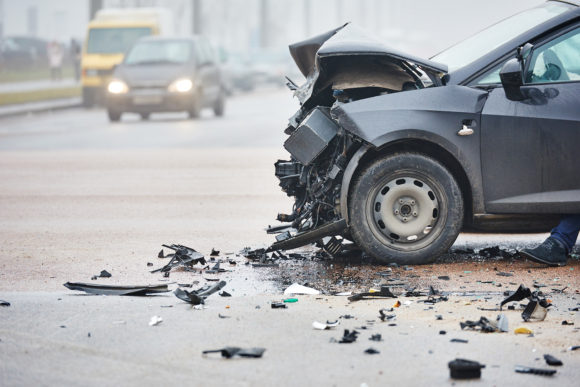A new crash test, conducted by the Insurance Institute for Highway Safety (IIHS), revealed poor ratings for all small cars tested.
In all five vehicles tested, the rear dummy submarined beneath the seat belt, causing the lap belt to slide from the hip bones onto the abdomen, increasing the potential for internal injuries.
While rear seats still offer the best protection for small children since they can be injured more easily by airbags, adults continue to be at an increased risk for internal injuries.
Though front seat safety has improved with better airbags and seat belts, rear seat safety hasn’t seen the same advancement.
Speaking of the safety organization’s updated moderate overlap front test crash, IIHS President David Harkey explained that during the crash tests “the rear dummy ‘submarined’ under the seat belt, causing the lap belt to ride up onto the abdomen and increasing the risk of internal injuries.”
Of the five small cars tested, none earned a good rating for rear seat protection.
While all five small cars provided good protection in the front seat, measurements indicated a slightly higher risk of head or neck injuries to the driver in the Sentra.
For the rear seating positions, two cars received an acceptable rating: the Honda Civic and Toyota Corolla sedans. Apart from submarining by the rear dummy, the acceptable-rated Civic and Corolla mostly provided adequate protection in the back seat. In the Corolla, the rear dummy’s head also approached the front seat back, increasing the risk of head injuries.
The Kia Forte, Nissan Sentra and Subaru Crosstrek received a poor rating and measurements taken from the rear dummy also showed a moderate or high risk of head, neck or chest injuries.
To earn a good rating, there can’t be an excessive risk of injury to the head, neck, chest, abdomen or thigh, as recorded by the second-row dummy.
According to the IIHS, the dummy must remain correctly positioned during the crash without sliding forward beneath the lap belt, and the head should remain a safe distance from the front seat back and the rest of the vehicle interior.
A pressure sensor on the rear dummy’s torso measures whether the shoulder belt is too high, which could lead to a less effective restraint system.
After research showed fatal injury was higher now for rear belted passengers than for those in front, the IIHS launched the updated moderate overlap front test crash last year.
The updated test adds a dummy, the approximate size of a small woman or 12 year-old-child, in the back seat behind the driver to encourage manufacturers to improve rear seat protection. The dummy in the driver seat is representative of an average adult male.
The IIHS researchers also developed new metrics focusing on injuries most frequently seen in back-seat passengers.
Unchanged from prior tests, the structure of the occupant compartment must still maintain adequate survival space for the driver, while measurements taken from the driver dummy shouldn’t show an excessive risk of injuries.
Was this article valuable?
Here are more articles you may enjoy.



 USAA to Lay Off 220 Employees
USAA to Lay Off 220 Employees  How California’s Huge Raises for Fast-Food Workers Will Ripple Across Industries
How California’s Huge Raises for Fast-Food Workers Will Ripple Across Industries  Investment Funds File New Suits Over Lighthouse Insurance Collapse in 2022
Investment Funds File New Suits Over Lighthouse Insurance Collapse in 2022  Former Congressman Charged After Collision with State Trooper in Florida
Former Congressman Charged After Collision with State Trooper in Florida 

